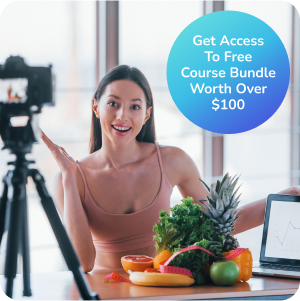Which Activity Is Right For Me | Low Intensity Or High Intensity?
- High Intensity Training
- How To Perform HIIT
- Awesome Benefits Of HIIT
- Solid Benefits Of Low Intensity Activity | Walking
- Conclusion

With the growing popularity of high intensity workouts like Tabata, high intensity interval cardio, resistance training, etc one starts to wonder if low intensity should be a part of their routine at all.
High Intensity Training
There is a growing body of research that suggests that you can get fit by exercising for as little as 20 minutes a few times a week. Further, with the recent mega-success of the paleo diet, which mimics the diet of our hunter-gatherer ancestors, researchers are exploring their lifestyles to arrive at an optimal fitness routine also.
This makes sense if you think about the fact that our bodies have evolved over millions of years, adapting to the environment prevalent in those times. 1http://www.ncbi.nlm.nih.gov/pubmed/20843503
If you were to imagine the lifestyle of our ancestors, you would find they engaged in a short bursts of high-intensity activities (saving themselves from wild animals or even hunting) and low-intensity activities like walking for miles every day to find shelter or searching for food.
James H. O’ Keefe’s comprehensive research into the lifestyle of hunter-gatherers describes their lifestyle as follows. 2http://thepaleodiet.com/wp-content/uploads/2015/08/Organic-Fitness-Physical-activity-Consistent-with-Our-Hunter-Gatherer-Heritage-The-Paleo-Diet.pdf
1) A large amount of light to moderate activity, such as walking. Most estimates indicate that hunter-gatherers covered an average daily distance in the range of 6-16 km (3.7-10 miles).
2) Hard days, resulting in expenditures of at least 800-1,200 kcal were typically followed by easier days.
3) Life in the wild often calls for intermittent bursts of moderate to high-level intensity exercise (hunting and stalking animals, shelter construction, carrying 20-30 kg of meat back to camp, etc.) with intervening periods of rest and recovery.
4) Their routines promoted aerobic endurance, flexibility, and strength, providing them with multifaceted fitness. This varied pattern of movement would have also conferred resiliency and reduced the likelihood of injury, allowing them to hunt and forage without major interruptions.
5) Virtually all of the exercises were done outdoors in the natural world. Outdoor activities help maintain ultraviolet-stimulated Vitamin D synthesis.
6) Ample rest, relaxation, and sleep were generally available to ensure complete recovery after strenuous exertion.
High-Intensity Workouts Can Be Broadly Categorized Into 2 Formats
Weight Training
Weight training is also called strength or resistance training. It focuses on a certain amount of reps (1-15) and sets (1-6) while using compound and isolated exercises to cover the entire body. The weight load on the person is brief and infrequent but intense. Weight training benefits are second to none.
Related Article: 14 Awesome Benefits Of Weight Training
I also wrote a guide for beginners on weight training; you can read that.
Related Article: Beginner Gym Tips: 4 Best Ways For A Beginner To Get Started
If you are an intermediate/advanced weight lifter, I have created 16 FBX workouts to help you build a lean, fit and strong physique. You can enroll
Related Course:
High-Intensity Interval Training ( HIIT )
It is a form of cardiovascular training performed on any cardio machine, like a treadmill, cross-trainer, etc. It can also be done using calisthenics like push-ups, squats in Tabata format or even via swimming.
It alternates periods of short, intense anaerobic exercise with less-intense recovery periods. HIIT sessions may vary from 4 minutes to 30 minutes.
How To Perform HIIT
ACSM Guidelines On HIIT
When developing a HIIT program, we need to consider the duration, intensity and frequency of the work intervals and the length of recovery intervals.
First, we need to calculate the Maximum heart rate(MHR). It can be calculated by subtracting your age from 220. So if you are 30 years old, your MHR would be 220-30= 190.
Intensity during the high-intensity work interval should be close to 80% of your estimated maximal heart rate.
A good indicator of your intensity is a talk test; if you cannot carry a conversation, you are exercising ‘very hard,’ and you would probably only be able to sustain the intensity for a small duration, maybe only a few seconds. This will vary based on your fitness levels.
The intensity during the recovery interval should be 40 to 50% of your estimated maximal heart rate. This would be an activity level you would be very comfortable with and where you are able to carry on a conversation with relative ease. For more accurate estimates, consider buying a heart rate monitor or a Fitbit or any other band.
The duration and frequency of the work and recovery interval are very important when designing a HIIT session. Many studies use a specific ratio of work to recovery to improve the different energy systems of the body.
For example, a ratio of 1:1 might be a 3-minute hard work (or high-intensity) bout followed by a 3-minute recovery (or low-intensity) bout. These 1:1 interval workouts often range about 3, 4, or 5 minutes followed by an equal time in recovery.
Another popular HIIT training protocol is called the ‘spring interval training method.’ With this type of program, the exerciser does about 30 seconds of ‘sprint or near full-out effort,’ which is followed by 4-4.5 minutes of recovery.
This combination of exercises can be repeated 3 to 5 times. These higher-intensity work efforts are typically shorter bouts (30 seconds with sprint interval training).
How Many Times A Week Can You Perform An HIIT Workout?
HIIT workouts are exhaustive and need a longer recovery period than regular cardio workouts. If you are a weight lifter and focus on heavy lifting 2-3 times a week, HIIT sessions more than 3 times a week can become a challenge.
Eventually, it all depends on one’s recuperative power (which in turn is affected by genetics, sleep, nutrition, etc). Even then, more than 3-4 sessions/week for a serious weight lifter is pushing the limit.
Furthermore, I want to encourage you to perform HIIT outdoors and not in the gym via either swimming or sprinting. Two main reasons for the same: Firstly, working out in the open provides exposure to sunlight, which stimulates vitamin D synthesis in the epidermis.
Did you know that Vitamin D deficiency is a common and potent risk factor for many health concerns, including CV disease (more than 1 billion people worldwide are vitamin D deficient and insufficient)?
Related Article: Over A Billion People Worldwide Are Vitamin D Deficient….Are You One Of Them?
Secondly, it has been demonstrated that outdoor exercise decreases emotional stress and improves mood to a greater extent than indoor exercise.
Adding swim sessions 2 times a week has been the best decision I have made regarding my health in the past year or so (my pool is out in the open). I am reaping so many amazing health benefits from swimming that very soon; I will write a comprehensive article on the benefits of swimming in the open. Stay tuned.
Awesome Benefits Of HIIT
Regular HIIT has been shown to significantly increase both aerobic and anaerobic fitness. HIIT also significantly lowers insulin resistance and results in a number of skeletal adaptations that result in enhanced skeletal muscle, fat oxidation and improved glucose tolerance. 3http://www.ncbi.nlm.nih.gov/pmc/articles/PMC2991639/#B1, 4http://www.ncbi.nlm.nih.gov/pmc/articles/PMC2991639/#B1
Further, HIIT has been shown to result in greater fat loss. Trapp et al. conducted a HIIT program for young women for 15 weeks with three 20 min sessions per week. 5http://www.hindawi.com/journals/jobe/2012/480467/
HIIT consisted of an 8s sprint followed by 12s of low intensity cycling, repeated for 20 min. Another group of women carried out an aerobic cycling protocol for 40 min each session. Results showed that women in the HIIT group lost 2.5 kg of subcutaneous fat, whereas no change occurred in the steady state aerobic exercise group.
Fat loss accruing through 15 weeks of HIIT was attained with 50% less exercise time commitment and a similar energy expenditure to that of steady-state exercise.
Solid Benefits Of Low Intensity Activity | Walking
Wait a minute, is doing high-intensity workouts for only a few hours a week enough? No! Studies have proved that you need to be active overall throughout the day (possibly through low-intensity activity); otherwise, you may still suffer from high cardiovascular risk and diabetes. 6http://www.ncbi.nlm.nih.gov/pubmed/22890825
According to a meta-analysis of eighteen studies that included 794,577 participants, sedentary time was associated with an increased risk of diabetes (112% increase) and cardiovascular disease (47% increased risk).
According to Tom Rath, the best-selling author of ‘Eat Move Sleep,’ which sold more than 6 million copies.
Sitting more than six hours a day greatly increases your risk of an early death. No matter how much you exercise, eat well, avoid smoking or add other healthy habits, excessive sitting will cause problems.
As soon as you sit down, electrical activity in your leg muscles turns off. The number of calories you burn drops to one per minute. Enzyme production, which helps break down fat, drops by 90 percent.
After two hours of sitting, your good cholesterol drops by 20 percent. Perhaps this explains why people with desk jobs have twice the rate of cardiovascular disease
Yet another research in British Journal by Rory Heath quotes the following. 7https://blogs.bmj.com/bjsm/2015/01/21/sitting-ducks-sedentary-behaviour-and-its-health-risks-part-one-of-a-two-part-series/
-During waking hours, 65% of an average person’s day is spent sedentary; 9-10 hours for adults
-Sitting at work constitutes 60% of total daily sitting on a weekday, but even on weekends, people still sit for 8 hours
-Positive associations between Cancer and Sedentary Behavior exist
a) Lung Cancer increases by 54%
b) Uterine cancer by 66%
c) Colon Cancer 30% increased risk
The concept of 10,000 steps a day is brilliant, and I feel everyone should try to reach this target every day.
Related Article: Is Chronic Sitting The New Smoking?
Keynote
Long continuous cardio (i.e. endurance training) usually falls under moderate training, and I have covered it in a separate article, HIIT or Steady State Cardio? Please read it for further clarity.
Related Article: HIIT Or Steady State Cardio?
Conclusion
If you’re wondering which kind of activity you should choose, a weight training routine done 2 to 3 times a week should be the foundation of one’s training routine, and other activities should be built around it to provide you with multi-faceted health benefits.
Related Article: 6 Awesome Benefits Of Working Out 3 Times A Week Using Fabulous Body (FBX) Workout Routines
I feel rejuvenated when I lift weights. FBX workouts save me a lot of time (I work out no more than 3-6 hours/week), and it has allowed me to develop a pleasing physique that not only looks good but is supremely healthy. I feel no other sport or activity can provide this many advantages.
Over the past few years, I have not worked out for more than 6 hours a week. Seriously, no more. In this time, I have gained over 20 lbs of rock-hard lean muscles and dropped tons of body fat.
Not everyone can bear the discomfort of high-intensity workouts where the chances of injury are high if you are not careful. Most people would love to stick to low to moderate-intensity activities like walking, yoga, dancing etc., and for them, I would have to say that any movement is better than none.
Although a combination of high and low-intensity workouts provides you with the full spectrum of health benefits, it comes down to what you are comfortable with and how hungry you are to meet your goals.
Beginners (or anyone not active for a prolonged period of time) should start with low to moderate-intensity workouts before they progress to high-intensity.
What type of activity do you prefer? Have anything you like to add? Let me know in the comments below!

Skill-Based Education.
Global Recognition.
Powerful Community Building
Secure a certificate of completion in as little as a day by graduating from one of our free courses.
Get Access to Our Free Courses. No Credit Card Required.

Fabulous Body Membership
Your All-Access Pass to A Fabulous Body & A Rewarding Career
25+ Certificate Courses & Programs, All Included
15 Day Free Trial, 100% Money-Back Guarantee
About Akash Sehrawat
Akash is a creator of 25+ programs and certificate courses in which more than 200,000 students have enrolled both on Udemy and Fabulous Body's native platform. Akash is also an author of three books that can be found on Amazon. His answers on Quora have gathered more than 12 million views in less than a year.










